SEEK’s latest employment report revealed that the number of job ads listed on the site has fallen to around pre-pandemic levels, whereas the number of applicants per job ad has risen around 55% from the same time in 2019:
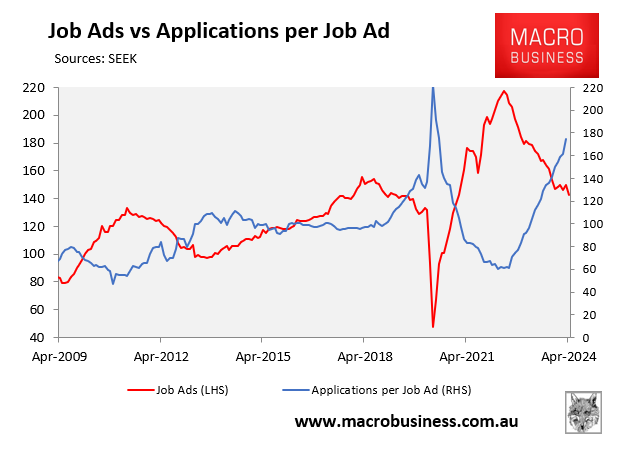
The explosion in the number of applicants per job ad is especially concerning, as it indicates that there are too many workers competing for fewer available jobs on offer.
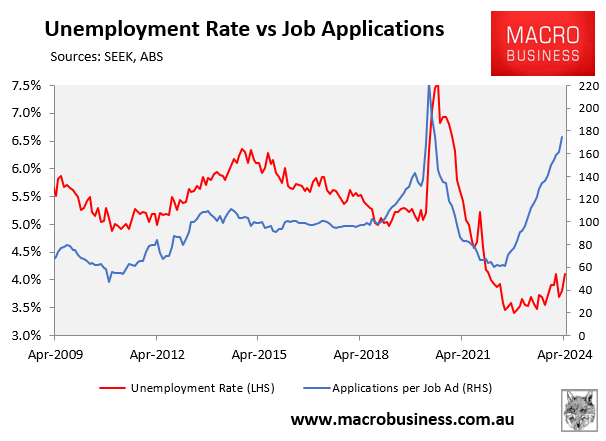
Indeed, the latest estimates from CBA show that due to Australia’s high immigration, around 40,000 jobs need to be created per month to keep the unemployment rate stable, assuming a steady participation rate:
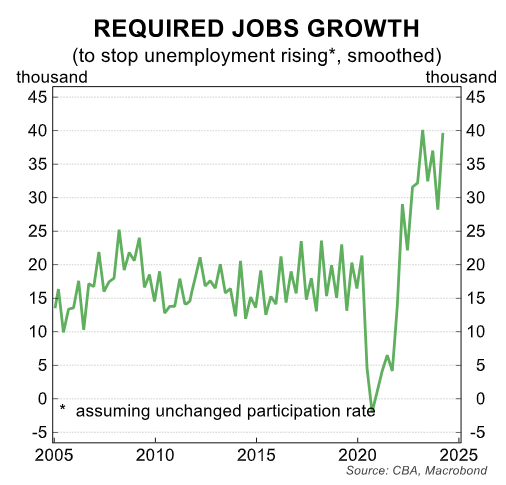
Kendra Banks, Managing Director, SEEK ANZ, hit the nail on the head with the following comment:
“Competition for live roles continues to grow, with applications per job ad rising significantly in March, and in almost all industries”, Banks said via media release.
“Hirers are therefore holding a lot of power in the market with many willing candidates for the roles available”.
With labour supply (via net overseas migration) running well ahead of demand, the balance of power has shifted back to employers.
In turn, Australian real wages will very likely continue to fall:
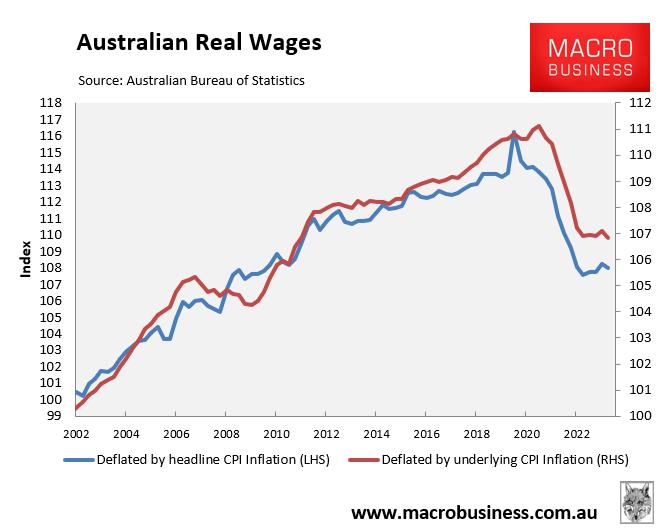
What an unmitigated disaster for working-class Australians! Excessive levels of net overseas migration have simultaneously driven up their cost of living via rents, while placing downward pressure on wages.
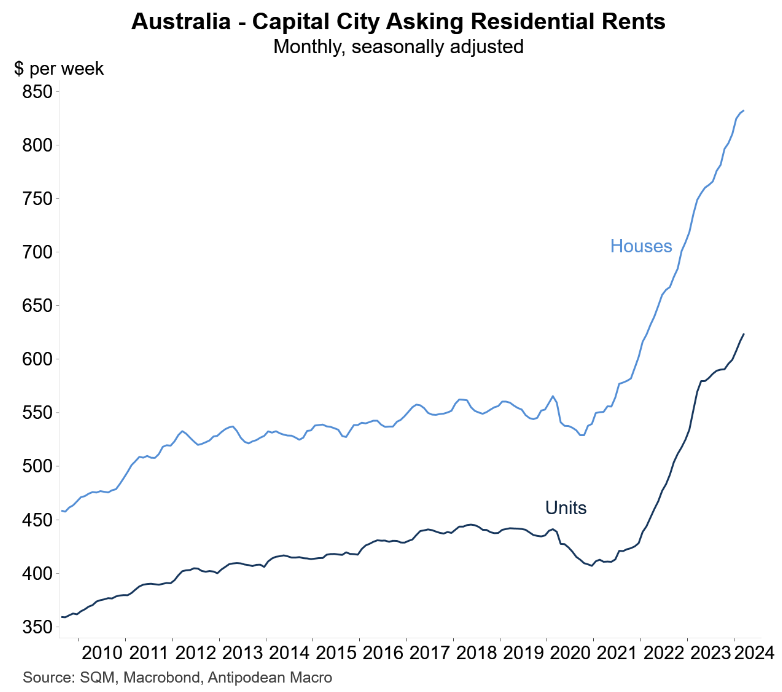
You could not design a worse policy if maximising the welfare of low-income Australians was your goal.

